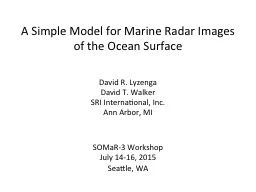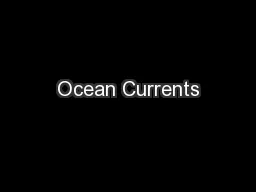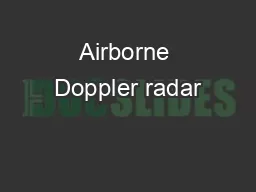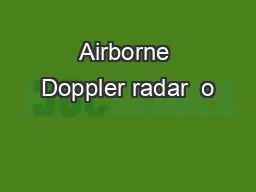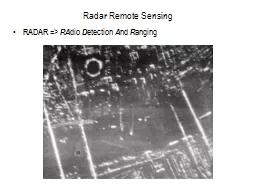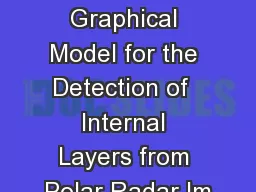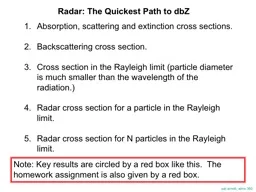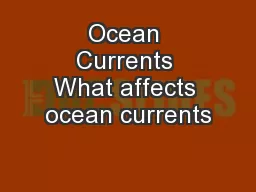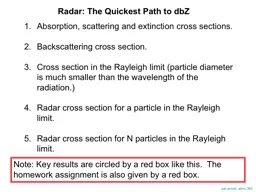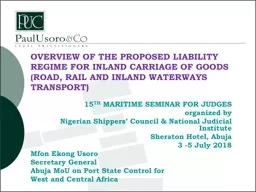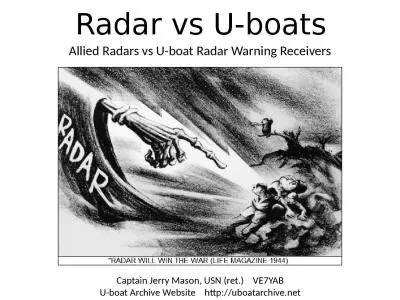PPT-A Simple Model for Marine Radar Images of the Ocean Surface
Author : giovanna-bartolotta | Published Date : 2015-11-09
David R Lyzenga David T Walker SRI International Inc Ann Arbor MI SOMaR3 Workshop July 1416 2015 Seattle WA Bragg Scattering According to the smallperturbation
Presentation Embed Code
Download Presentation
Download Presentation The PPT/PDF document "A Simple Model for Marine Radar Images o..." is the property of its rightful owner. Permission is granted to download and print the materials on this website for personal, non-commercial use only, and to display it on your personal computer provided you do not modify the materials and that you retain all copyright notices contained in the materials. By downloading content from our website, you accept the terms of this agreement.
A Simple Model for Marine Radar Images of the Ocean Surface: Transcript
Download Rules Of Document
"A Simple Model for Marine Radar Images of the Ocean Surface"The content belongs to its owner. You may download and print it for personal use, without modification, and keep all copyright notices. By downloading, you agree to these terms.
Related Documents

